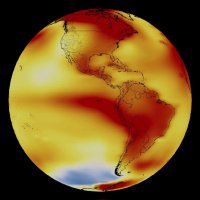
NASA Climate
@nasaclimate
Understanding our planet to benefit humankind.
Verification: nasa.gov/socialmedia
ID: 15461733
http://science.nasa.gov/climate-change 17-07-2008 00:15:45
7,7K Tweet
358,358K Followers
118 Following







Have questions about extreme weather? Today at 3pm ET, NASA Climate experts discuss shifts in the intensity of events such as heat waves, floods, wildfires, and hurricanes. Use #AskNASA to submit a question and watch live: go.nasa.gov/3Mena3f



Use your talents to address one of this year’s 20 NASA International Space Apps Challenge challenges! Create an ocean world without photosynthesis or share the wonder of exoplanets – no matter your skill level, there’s a challenge for you: bit.ly/4cEYP1j









